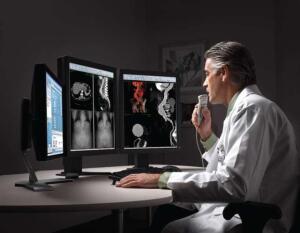by
Kathy Mahdoubi, Senior Correspondent | April 08, 2010

Carestream Health’s latest
RIS/PACS platform supports
productivity-enhancing features
for individual users
and facilities
This report originally appeared in the March 2010 issue of DOTmed Business News
We are entering a whole new paradigm of health IT. Soon, we will no longer be able to talk about picture archiving and communication systems (PACS), radiology information systems (RIS) or hospital information systems (HIS) as separate entities, because they will have morphed into an entirely new and integrated system that requires all-new descriptive terminology.
From the looks of things, open, thin-client and web-based systems are taking over many facilities and new products on the horizon are pushing the information envelope by fusing more data and providing richer and more meaningful applications. Combine those facts with the added incentive of federal stimulus money on the line and it is clear now is prime time for adoption.
Merging Health IT
The old paradigm for PACS was a sort of static departmental system of databases, software and hardware that housed and offered up medical images. The RIS was the vault of radiology information for each patient, helping radiologists keep track of workflow, differential diagnoses and a patient's overall radiological history, whereas the HIS was the mostly administrative and billing side of the larger facility. This isn't so much the case anymore.
Siemens syngo Workflow
- the RIS component
of Siemens syngo
Suite - drives the
radiological workflow from
order entry to
image and report
distribution.
"RIS systems now contain more information about the patient, rather than just about the radiology history," says Matt Long, vice president of Healthcare Informatics, Philips Healthcare.. "HIS systems hold more about the clinical side and you're now starting to see more functions around ordering, scheduling and reporting, and results are being much more directly embedded in the PACS."
Not just an archive
The most fundamental purpose of the PACS is to manage medical images - to acquire the legal copy of image data, which is then stored and distributed according to the needs of the diagnostician, the treating physician or referring physician, and to facilitate communication between them. This can mean different things in terms of structure and hardware. Technically, reading monitors and CD burners are components of PACS.
